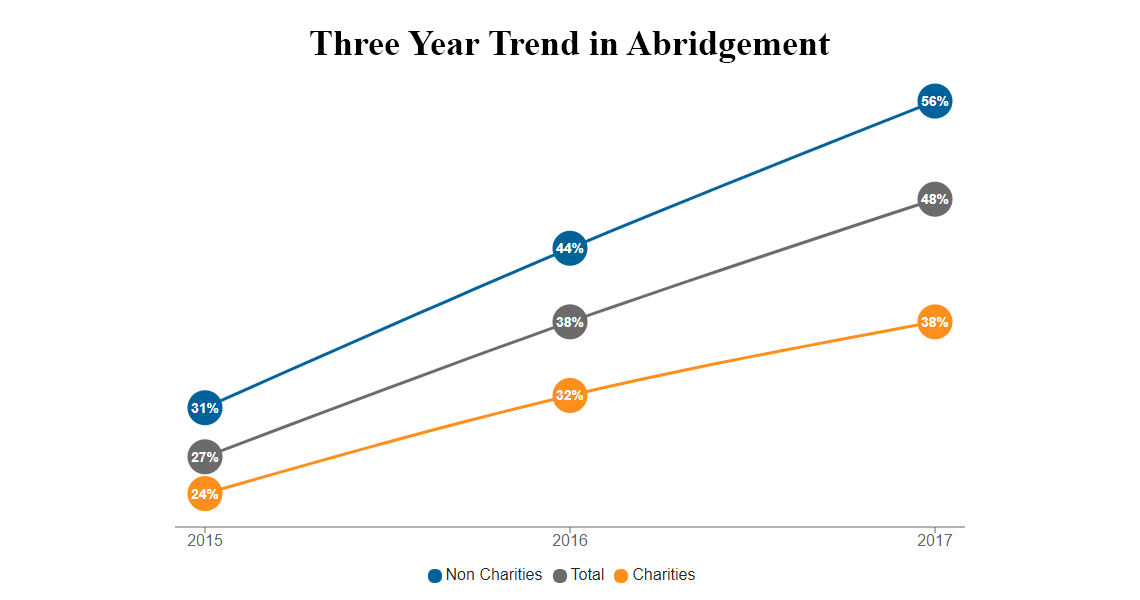Blog
Less doesn’t equal more in nonprofit disclosure

Filing of abridged accounts by nonprofits rose again in 2018
40% of registered charities filed abridged accounts for 2017.
For non-charities the level was 56%.
Filing of abridged accounts by nonprofits has almost doubled
Benefacts latest analysis shows that since the filing regulations changed, the number of nonprofits submitting their accounts in abridged form to the CRO has almost doubled, from 27% in 2015 to 48% in 2017.
Use Benefacts new advanced search facility to review the list of companies that filed abridged accounts. Click here to see the latest list of abridged accounts, and charity companies that filed abridged accounts.
What are abridged accounts?
Since the Companies Act was changed in 2014, nonprofit companies can avail of the same filing exemptions as privately-owned companies. More and more choose to do so.
By law, every company must produce a directors report and full set of financial statements and present these to an annual meeting of its members/its owners. After that, the members of the company decide the form in which they share it with the rest of us.
The new rules mean that once the full accounts have been adopted at the AGM, they may be filed in a summary or “abridged” form. Abridged accounts include the Directors and Auditors’ report, the balance sheet and notes to the accounts, but exclude the income and expenditure statement.
Who cares?
The transparency of charity accounts is a matter of public interest. By concealing information about their income and expenditure, more than 1,500 charity companies – including those that rely on public funding – are giving us less than the full picture about where their money comes from and what they do with it.
Smart nonprofit Boards will be asking not “how little can we get away with reporting?” but “how can we use our annual report to communicate better with our stakeholders?”.
The reality is, full accounts are an integral part of any due diligence research. They’re used by prospective donors, government funders, volunteers and people considering serving as directors on Boards. They’re accessed more readily than ever before now that Benefacts publishes detailed information derived from them on this website.
Another burden of regulation on nonprofits?
On the contrary. The Charities Act provides that charities which are also companies don’t have to file twice. They just have to send their accounts to the CRO which in turn forwards them to the Charities Regulator.
The cost of audit is the same whatever the form in which the accounts are filed. In fact, it’s surprising so many nonprofits take the trouble to publish abridged accounts to the Companies Registration Office when the terms of their funding contracts require them to make the full accounts available to their funders.
Less isn’t more – act now to reverse the trend
Most nonprofits have a financial year-end of 31st December, and 2018 audits are now being planned or are underway already. Now is the time to plan for a great annual report including a clear account of what you are doing and why it’s important, and the income and expenditure that supports this.
Make your views known
For charities, even charity companies, higher reporting standards will soon be regulated for because a new financial reporting standard is not far off. In fact a call for submissions has been made on behalf of the four regulators of charities in these islands – view it here, and consider making a submission before the 4th February deadline.

Category: Nonprofit disclosures



